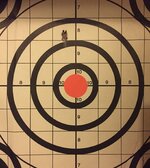- Messages
- 11,840
- Reactions
- 11,103
I am cooking too.
I have read posts from Alaskan guides that say that some of the locals take all the big game up there with a 270. Not uncommon,not irresponsible .
Shot placement is key though
I have read posts from Alaskan guides that say that some of the locals take all the big game up there with a 270. Not uncommon,not irresponsible .
Shot placement is key though












